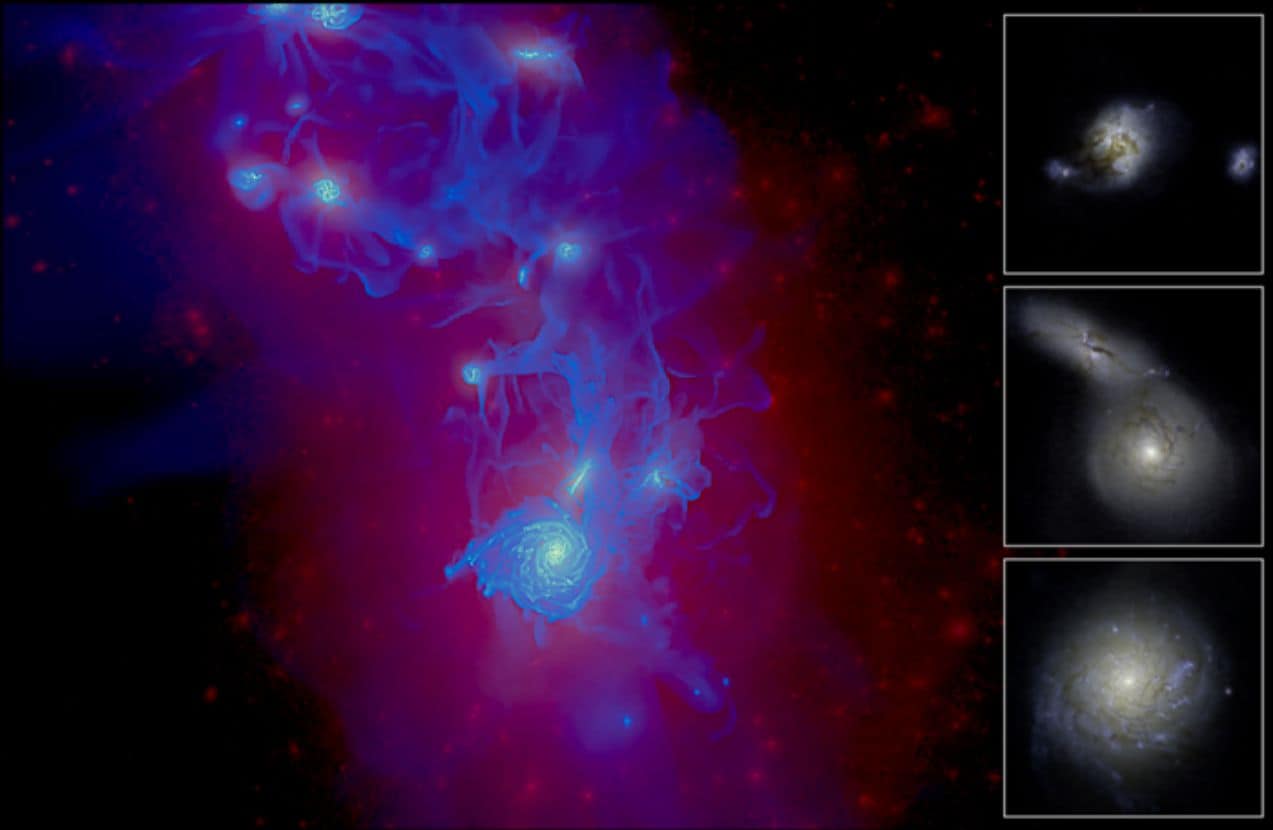A research team at Lund University in Sweden has succeeded in following the evolution of a galaxy over a 13.8 billion-year period using a supercomputer simulation.
The study demonstrates how, over time, young and chaotic galaxies grow into spiral galaxies such as the Milky Way as a result of interstellar frontal collisions.
The Universe was a chaotic place just after the Big Bang 13.8 billion years ago. Galaxies collided constantly. Stars developed at a breakneck pace inside monstrous gas clouds. After a few billion years of intergalactic turbulence, the turbulent embryonic galaxies stabilized and eventually matured into well-ordered spiral galaxies.
The precise sequence of these events has long been a source of consternation for the world’s astronomers. However, astronomers have been able to throw some light on the subject in a new paper published in Monthly Notices of the Royal Astronomical Society.
“Using a supercomputer, we have created a high-resolution simulation that provides a detailed picture of a galaxy’s development since the Big Bang, and how young chaotic galaxies transition into well-ordered spirals,” says Oscar Agertz, astronomy researcher at Lund University.
The study’s authors, lead by Oscar Agertz and Florent Renaud, use the Milky Way’s stars as a starting point. The stars serve as time capsules, revealing information about distant epochs and the environments in which they arose. Their positions, speeds, and abundances of certain chemical components can thus aid in our understanding of how our own galaxy evolved, with the use of computer models.
“We have discovered that when two large galaxies collide, a new disc can be created around the old one due to the enormous inflows of star-forming gas. Our simulation shows that the old and new discs slowly merged over a period of several billion years. This is something that not only resulted in a stable spiral galaxy, but also in populations of stars that are similar to those in the Milky Way,” says Florent Renaud, astronomy researcher at Lund University.
The new discoveries will aid astronomers in deciphering existing and future maps of the Milky Way. The work establishes a new route for research, with the primary focus on the interaction of big galaxy collisions with the formation of spiral galaxies’ discs.
In collaboration with the research infrastructure PRACE, the Lund research team has already begun fresh supercomputer simulations (Partnership for Advanced Computing in Europe).
“With the current study and our new computer simulations we will generate a lot of information which means we can better understand the Milky Way’s fascinating life since the beginning of the Universe,” concludes Oscar Agertz.
